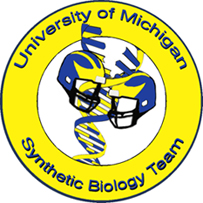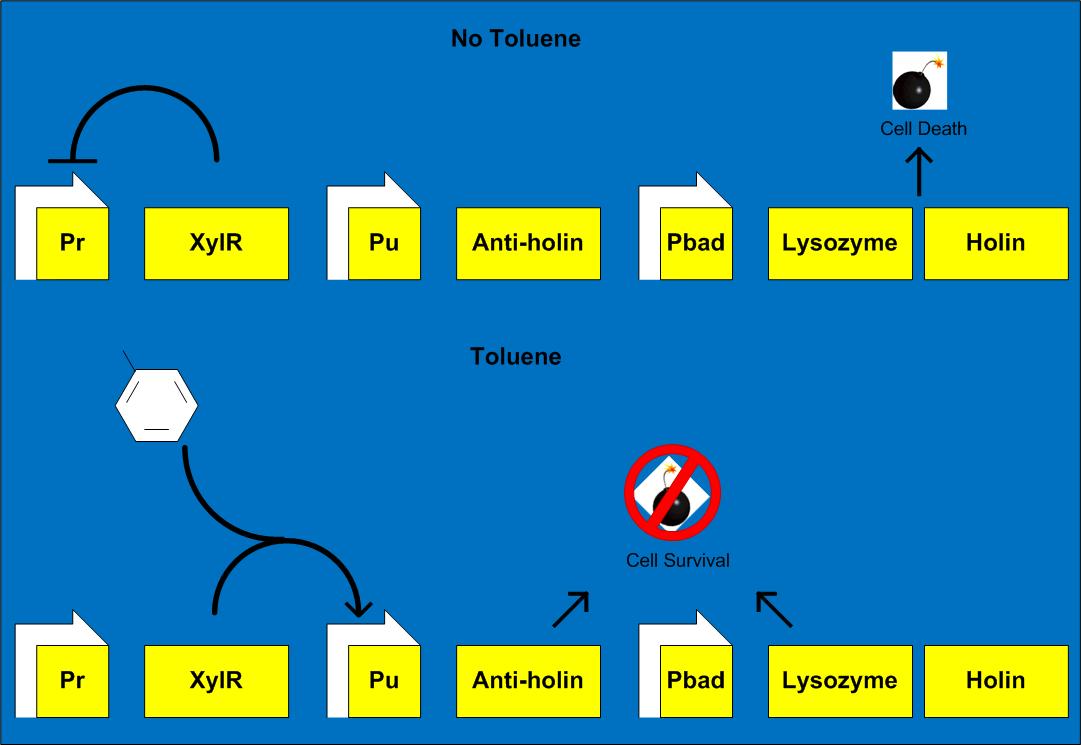Team:Michigan/Project
From 2009.igem.org
| Line 10: | Line 10: | ||
==<B><font size=4>Overview</font></B>== | ==<B><font size=4>Overview</font></B>== | ||
<div align=justify> | <div align=justify> | ||
| + | |||
| + | [[Image:Kill_switch_topology.jpg]] | ||
The Toluene Terminator is a ''Pseudomonas'' device that aims to identify the toxic compound toluene in an environmental setting (e.g. a spill into soil from an underground petrol tank), move to and uptake it, metabolize it, and destroy itself when all of the toluene has been metabolized. This device will require four basic modules: toluene chemorecognition, chemotaxis, toluene metabolism, and a suicide mechanism. This year we have been working on toluene metabolism and the suicide mechanism.</div><br> | The Toluene Terminator is a ''Pseudomonas'' device that aims to identify the toxic compound toluene in an environmental setting (e.g. a spill into soil from an underground petrol tank), move to and uptake it, metabolize it, and destroy itself when all of the toluene has been metabolized. This device will require four basic modules: toluene chemorecognition, chemotaxis, toluene metabolism, and a suicide mechanism. This year we have been working on toluene metabolism and the suicide mechanism.</div><br> | ||
| Line 25: | Line 27: | ||
| - | + | ||
|} | |} | ||
Revision as of 20:02, 18 October 2009
| ||||||||||||||||||||||
|---|---|---|---|---|---|---|---|---|---|---|---|---|---|---|---|---|---|---|---|---|---|---|
|
The Toluene TerminatorOverview
The Toluene Terminator is a Pseudomonas device that aims to identify the toxic compound toluene in an environmental setting (e.g. a spill into soil from an underground petrol tank), move to and uptake it, metabolize it, and destroy itself when all of the toluene has been metabolized. This device will require four basic modules: toluene chemorecognition, chemotaxis, toluene metabolism, and a suicide mechanism. This year we have been working on toluene metabolism and the suicide mechanism. Toluene MetabolismSuicide MechanismThe Terminator's suicide mechanism, or kill switch, operates through the T4 phage's holin genetics. The suicide operon consists of an arabinose-dependent promoter controlling expression of the holin and endolysin proteins, followed by the Pu promoter controlling the antiholin gene. This way, none of the genes are activated until the device is released into the contaminated area, along with a quantity of arabinose. This results in the arabinose-mediated expression of the lytic genes holin and endolysin, as well as the toluene-mediated expression of antiholin, which posttranslationally inhibits the lytic proteins. Then, when the toluene disappears (when it is all metabolized) from the local region of the individual device, antiholin is no longer expressed, allowing the lytic proteins to destroy the cell.
|
|---|
 "
"

